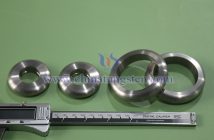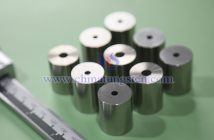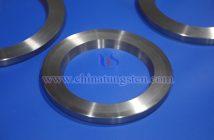In the vast universe of materials science, ammonium metatungstate (AMT) shines like a unique and dazzling star, exuding captivating charm. This inorganic compound, with its excellent physicochemical properties, holds a pivotal position in modern industry and cutting-edge scientific research.
The outstanding performance of AMT in practical applications underscores the importance of deeply exploring its crystal structure. The crystal structure serves as the "internal code" of AMT, determining its physical and chemical properties while providing critical clues for unlocking its potential applications.
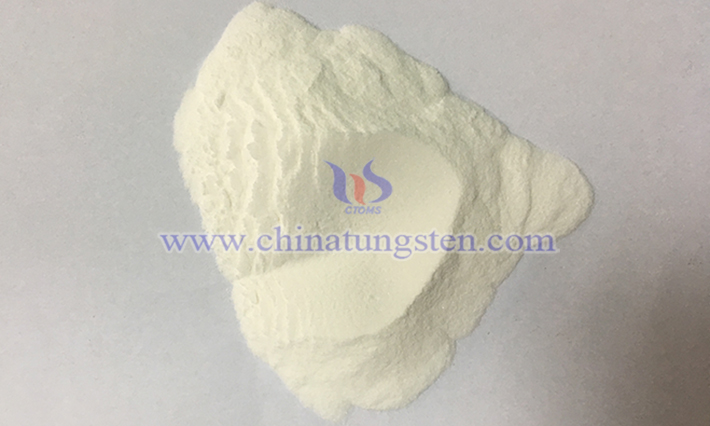
CTIA GROUP LTD ammonium metatungstate picture
I. Crystal Structure Analysis of Ammonium Metatungstate
The crystal structure of ammonium metatungstate centers on a Keggin-type polyoxoanion, combined with ammonium cations and crystal water, forming a stable and ordered structure. This unique combination endows AMT with numerous excellent properties.
The Keggin-type polyoxoanion [H?W??O??]?? is the core of the AMT crystal structure, consisting of 12 tungsten-oxygen octahedra cleverly linked by shared oxygen atoms into an approximately spherical tetrahedral symmetric structure, known as the α-Keggin configuration. In this structure, 12 tungsten atoms act as loyal guardians, positioned at the vertices of the cluster, each coordinated with 6 oxygen atoms to form stable octahedral units.
Oxygen atoms play diverse roles within the structure, classified into four types. Terminal oxygen (W=O), forming double bonds with tungsten, is located on the surface and significantly influences the structure's stability and chemical reactivity. Bridging oxygen (W-O-W), including edge-sharing and corner-sharing types, acts like bridges connecting different tungsten-oxygen octahedra, crucial for maintaining the overall integrity of the structure. Central oxygen resides inside the cluster, silently stabilizing the entire framework, while protonated oxygen, bonded with two hydrogen atoms, adds unique chemical characteristics to [H?W??O??]??.
The Keggin anion carries a 6- charge, resembling a negatively charged particle cluster that requires other particles to balance the charge for overall electrical neutrality. Ammonium cations (NH??) play a vital role here, acting as positively charged guardians that interact with the Keggin anion to maintain the crystal's charge balance.
AMT typically exists as a hydrate, containing 3-6 crystal water molecules (the exact number depending on preparation conditions). These crystal waters act like adhesives in a building, binding the components together. Through hydrogen bonding with the Keggin anion and ammonium cations, they fill lattice voids, further stabilizing the three-dimensional network. When heated to 100-150°C, the crystal water gradually evaporates, causing slight lattice contraction, though the Keggin framework remains intact. The hydrophilicity of crystal water contributes to AMT's high water solubility, facilitating solution preparation.
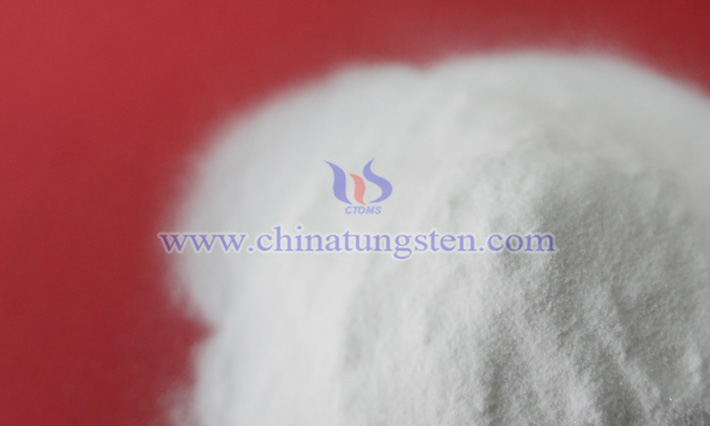
CTIA GROUP LTD ammonium metatungstate picture
II. Detection Methods for AMT Crystal Structure
X-ray diffraction (XRD) analysis, a scientific method using X-rays to probe crystal structures, is a key tool for studying the AMT crystal structure. Its principle involves the interference of X-rays scattered by the regularly arranged atoms in a crystal lattice—where the atomic spacing matches the wavelength of incident X-rays—producing strong diffraction patterns in specific directions. The spatial distribution and intensity of these diffraction lines are closely related to the crystal structure.
Spectroscopic techniques, which analyze the interaction of matter with electromagnetic waves (e.g., absorption, emission, or scattering), are used to study a material's structure, composition, and properties. Infrared spectroscopy analyzes molecular characteristics using infrared light, while Raman spectroscopy, based on the Raman scattering effect discovered by Indian scientist C.V. Raman, analyzes scattered light of different frequencies to obtain information on molecular vibrations and rotations, aiding molecular structure research.
III. Unique Properties Conferred by AMT Structure
The unique crystal structure of AMT acts like a magical key, unlocking a range of excellent properties that showcase its extraordinary value across various fields, making it a vital material in modern industry and research.
AMT exhibits good chemical stability. At room temperature, it behaves like a steadfast guardian, resisting decomposition and maintaining its chemical composition and structural integrity over time. Even in aqueous solutions, the stable lattice formed by the Keggin polyoxoanion, ammonium cations, and crystal water withstands external interference, preserving the cluster structure. However, at elevated temperatures, AMT gradually decomposes, first losing crystal water and then converting into tungsten oxide.
AMT also has high solubility. Existing as a hydrate, its crystal water's hydrophilicity attracts surrounding water molecules. The ammonium cations and Keggin polyoxoanion in the crystal structure further enhance water solubility by interacting with water molecules, promoting dissolution.
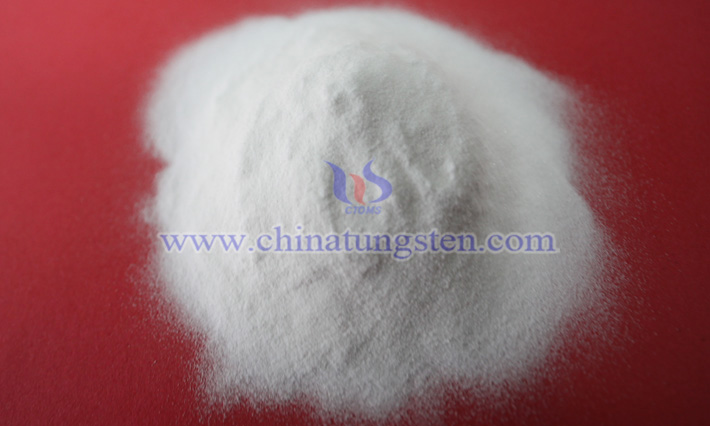
CTIA GROUP LTD ammonium metatungstate picture
IV. Factors Influencing AMT Crystal Structure
The AMT crystal structure, akin to a precisely engineered edifice, owes its stability and functionality to a combination of internal and external factors.
Impact of Preparation Conditions: During thermal decomposition, temperature and reaction time are critical variables. Higher temperatures facilitate the deammoniation and dehydration of ammonium paratungstate into AMT, but excessive heat or prolonged reaction times can lead to over-decomposition and structural reorganization, affecting integrity. In the acid neutralization method, pH affects the crystal structure; a low pH increases AMT solubility, hindering crystallization, while a high pH triggers side reactions, reducing purity.
Impact of Impurities: Impurities significantly influence the AMT crystal structure. Metal ions like iron and copper can interact with crystal ions, occupying lattice sites and disrupting structural symmetry. Organic impurities may adsorb onto the crystal surface or bond with internal ions, interfering with crystal growth.
Impact of Environmental Factors: Environmental temperature affects the crystal structure. High temperatures intensify molecular thermal motion, causing structural expansion, while low temperatures inhibit crystal growth.

